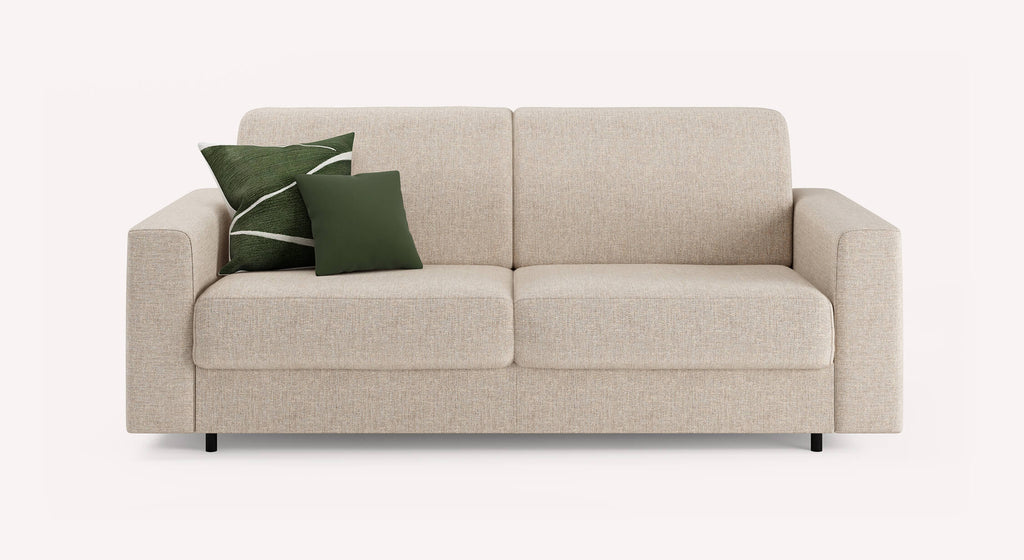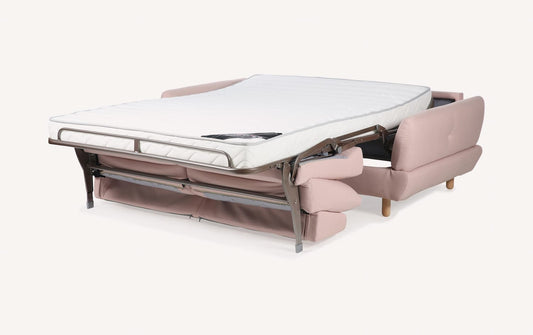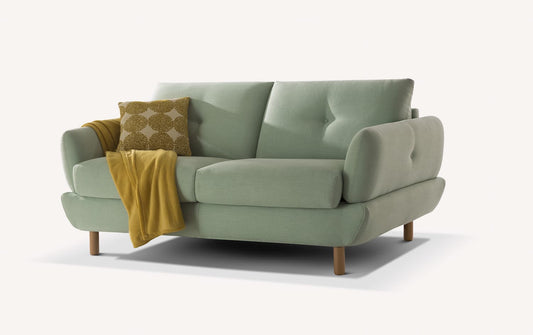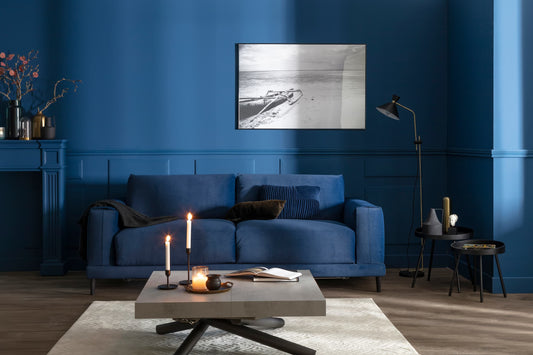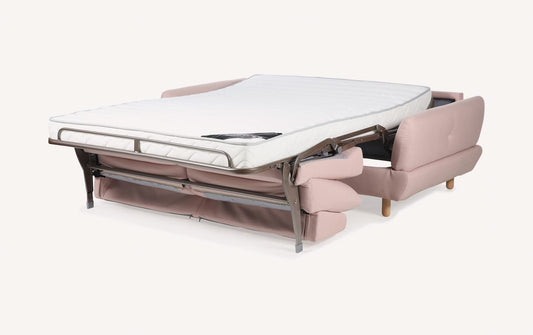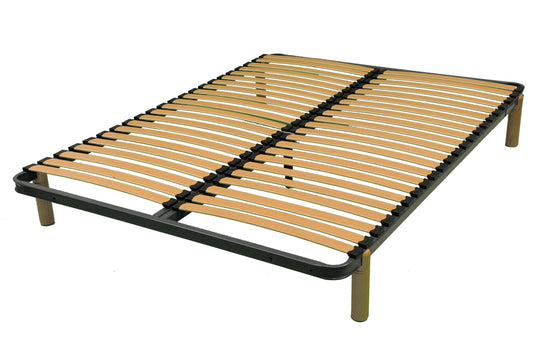- 1. What is an ecological convertible sofa?
- 2. What are the environmental benefits of ecological convertible sofas?
- 3. Which materials are the most environmentally friendly?
- 4. How to choose an ecological sofa?
- 5. What eco-friendly convertible sofas are available on the market?
- 6. What are the advantages and disadvantages of eco-friendly convertible sofas?
- 7. What factors can affect the price of eco-friendly convertible sofas?
- 8. What accessories should you buy to accompany an ecological convertible sofa?
- 9. What tips should be followed when maintaining an eco-friendly sofa bed?
- 10. What are the latest developments regarding eco-friendly convertible sofas?
- FAQs
In a world increasingly aware of the importance of sustainability and respect for the environment, the furniture we choose for our interiors is not left out. Among the centerpieces of a living room is the ecological convertible sofa , a piece of furniture combining functionality and comfort .
The emergence of ecological convertible sofas represents an innovative response to current ecological challenges. This type of sofa is distinguished by the use of environmentally friendly materials, from the structure to the padding, and by a manufacturing process concerned with reducing the carbon footprint.
In this context, it becomes essential to understand what defines an ecological convertible sofa, the environmental benefits it provides, as well as the criteria to consider to make an informed choice.
Before purchasing a convertible sofa , discover this guide, which supports you in discovering this sustainable alternative, by exploring the options available on the market, their advantages, their disadvantages, and providing advice for their maintenance, in order to extend their lifespan in an eco-responsible manner.

1. What is an ecological convertible sofa?
An ecological convertible sofa is a multifunctional piece of furniture designed with particular sensitivity to the environment. It combines the practicality of a traditional sofa with the flexibility of a guest bed, while integrating sustainable practices into its design.
These sofas are made using renewable, recycled or organic materials, such as certified wood from sustainably managed forests, organic textiles or foams without harmful chemicals. They are also produced via methods that aim to reduce waste and carbon emissions.
The objective is to minimize the environmental impact throughout the life cycle of the sofa, from its production to its end of life.
2. What are the environmental benefits of ecological convertible sofas?
Reduction of carbon footprint
Eco-friendly convertible sofas are often made with particular attention to reducing the carbon footprint. This is due to the use of local or sustainable materials, which require less transportation and produce fewer greenhouse gas emissions. Additionally, manufacturing methods tend to be more energy and resource efficient, further decreasing the CO2 emissions associated with their production. By choosing this furniture, consumers contribute to a low carbon impact economy.
Eco-responsible conservation
By using recycled or renewable materials, such as FSC-certified solid wood, organic cotton or foams made from natural sources, ecological convertible sofas contribute to the preservation of ecosystems and the reduction of deforestation. These materials often require less water and chemicals to produce, helping to conserve valuable natural resources and protect biodiversity.

3. Which materials are the most environmentally friendly?
Sustainable wood: the simplest material for an ecological sofa
Know-how in the choice of wood is a central element in the manufacturing of ecological convertible sofas. Opting for wood from sustainably managed forests (ash, beech, chestnut, etc.), such as that certified by the Forest Stewardship Council (FSC), guarantees that the use of trees contributes to the health of forest ecosystems and reduces considerably the carbon footprint of the finished product.
By avoiding pressed wood, which can be less ecological and sustainable, and choosing collections made with pure, untreated materials, these practices encourage responsible forest management, ensuring tree regeneration and maintaining biodiversity.
Ecological fabrics: a controlled environmental impact
Eco-friendly convertible sofas are often upholstered in natural or recycled fabrics. Options include organic cotton, which is grown without harmful pesticides, certified cruelty-free wool, or recycled fibers, which reduce waste by giving new life to existing materials. These fabrics also limit exposure to chemicals and reduce water pollution during the production process.
Natural fillings: a reduced carbon footprint
For padding, natural materials such as natural latex, soy foam, or bamboo fibers are preferred for their low environmental impact. These biodegradable and often renewable materials offer an environmentally friendly alternative to petroleum-based foams, reducing dependence on non-renewable fossil resources and decreasing associated greenhouse gas emissions.

4. How to choose an ecological sofa?
Purchasing an ecological convertible sofa in France is an approach that reflects the growing awareness of our environmental impact. These versatile pieces of furniture are not only a choice of style and comfort but also represent an environmentally friendly decision. To make a wise choice, you should carefully consider:
-
Source of materials: Check that the wood is certified by recognized organizations such as the FSC, ensuring sustainable forest management.
-
Durability and robustness: Choose sofas designed to last, thus minimizing their ecological footprint in the long term.
-
Green certifications: Look for products with environmental certifications like Greenguard, which confirms low VOC emissions.
-
Recyclable components: Opt for sofas with recyclable or removable components, for a more environmentally friendly end of life.
Taking these criteria into account when purchasing an eco-friendly convertible sofa not only benefits the planet but also ensures that you are investing in a product that will last for many years.
Be careful, if the ecological aspect is a good thing to take into account before your purchase, you must also be sure to opt for a comfortable convertible sofa , which will be adapted to your needs.
5. What eco-friendly convertible sofas are available on the market?
In today's market, environmentally conscious consumers can find a variety of eco-friendly convertible sofas designed to minimize environmental impact.
These options include:
-
Models made from sustainable wood from responsibly managed forests.
-
Units covered in natural fabrics, such as organic cotton or linen, and leathers from environmentally friendly tanneries.
-
Sofas with foam padding made from natural materials, such as natural latex or coconut fibers.
Consumers can also find modular options that promote long life and easy repair, as well as designs that incorporate recycled materials and are themselves fully recyclable at end of life. These products align with a philosophy of conscious production and an ethic of sustainable consumption.
6. What are the advantages and disadvantages of eco-friendly convertible sofas?
Choosing an ecological convertible sofa is a decision that combines comfort and environmental awareness. This furniture, while being functional and aesthetic, incorporates important ecological considerations.
Before making the move, it's essential to understand the benefits, such as durability and a healthier interior, as well as the potential downsides, including upfront cost and available selection.
Benefits
-
Reduced environmental impact: Eco-friendly convertible sofas are made with sustainable materials and processes that minimize waste and pollution, thereby contributing to environmental protection.
-
Health and Well-being: They contain fewer volatile organic compounds (VOCs) and toxic chemicals, improving indoor air quality and reducing health risks.
-
Durability: These sofas are often more durable and require less replacement, which is economically beneficial in the long term and reduces resource consumption.
Disadvantages
-
Higher initial cost: The purchase price may be higher than traditional convertible sofas due to the sustainable materials and manufacturing methods.
-
Limited choices: There may be less variety in terms of styles and designs compared to non-eco-friendly convertible sofas, although this is gradually changing.
-
Availability: These products may be less accessible and more difficult to find in traditional furniture stores, often requiring purchasing online or searching for specialty retailers.
Eco-friendly convertible sofas are a smart choice for those looking to combine home functionality with environmental responsibility. If the initial investment and limited variety can be obstacles, the long-term benefits on health, the environment and even the domestic economy can largely compensate for these constraints.
7. What factors can affect the price of eco-friendly convertible sofas?
The price of eco-friendly convertible sofas can vary depending on several factors. The quality and source of ecological materials, often more expensive than conventional materials, are determining factors.
Sustainable and ethical manufacturing processes, which often include fair labor practices and investments in clean technology, can also increase the cost. In addition, ecological certifications, such as Greenguard or FSC, and the sustainability of the design, promising superior longevity, are factors that can influence the price upwards.
Finally, innovation and the integration of additional features, such as advanced conversion mechanisms or modular designs, can also play a role in determining cost.
8. What accessories should you buy to accompany an ecological convertible sofa?
To accompany an eco-friendly convertible sofa, consider eco-friendly accessories to reinforce your commitment to sustainability:
-
Cushions made from natural materials : choose fillings made from organic or recycled fibers.
-
Organic throws and blankets : choose certified organic fabrics or recycled fibers.
-
Ecological cleaning products : for cleaning, opt for solutions without aggressive chemicals.
-
Sofa Protection : Slipcovers made from durable, washable textiles to extend the life of your sofa.
9. What tips should be followed when maintaining an eco-friendly sofa bed?
For the maintenance of an ecological convertible sofa, follow these tips:
-
Use environmentally friendly, non-toxic cleaning products to avoid damage to durable materials.
-
Vacuum regularly with a soft nozzle to remove dust without damaging the fabrics.
-
Use dry cleaning techniques for water-sensitive fabrics.
-
Treat stains immediately with natural methods , such as baking soda or diluted vinegar.
-
Air the convertible mattress frequently to prevent moisture buildup and odors.
10. What are the latest developments regarding eco-friendly convertible sofas?
The latest developments in the field of eco-friendly convertible sofas focus on innovation in materials and sustainability. Manufacturers are increasingly using recycled fibers and renewable organic materials, such as hemp and bamboo.
Technological advances have made it possible to create biodegradable cushioning foams and more efficient and sustainable conversion mechanisms. Additionally, some sofas are now designed to be completely disassembled, making it easier to recycle and repair individual components.
Convertible sofa or sofa bed, any differences? For now, these two products have the same progress.
FAQs
Why choose a convertible sofa?
Opting for a convertible sofa is wise for those looking for versatility and space saving. It serves as both a classic sofa and converts into a bed, ideal for small spaces or for accommodating guests without a spare bedroom.
What price for a convertible sofa?
The price of a convertible sofa varies greatly, from a few hundred to several thousand euros, depending on the size, design, materials and conversion mechanisms. On average, expect to spend between 1000 and 5000 euros.
How do you know if a sofa is convertible?
To identify a convertible sofa, look for a handle or pull mechanism that allows you to unfold a mattress hidden under the seat cushions, or see if the back of the sofa can lower to form a bed. These features are often described in product documentation or demonstrated in-store.
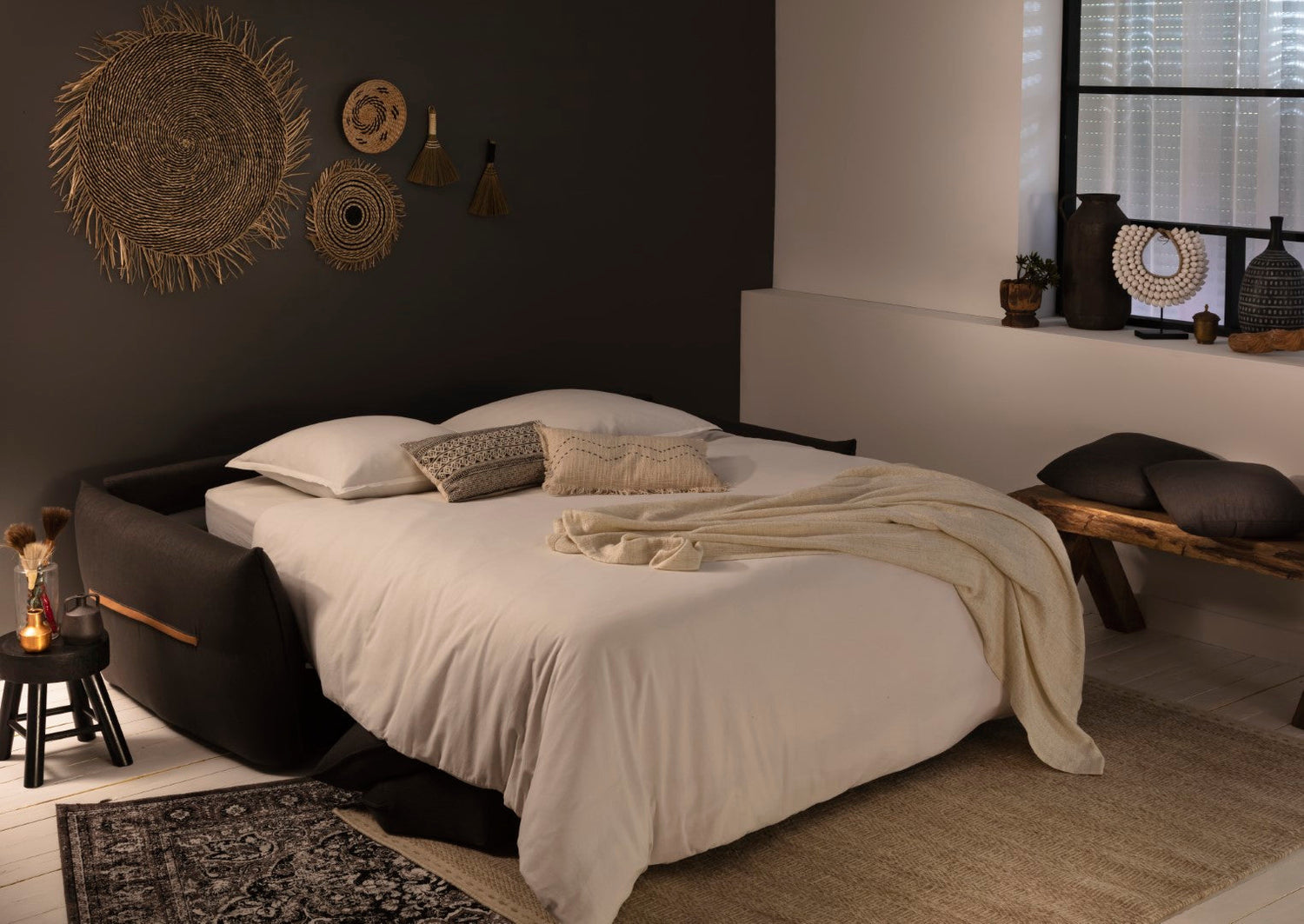
 The up and down coffee table: practical on a daily basis for small homes
The up and down coffee table: practical on a daily basis for small homes
 Liftable table: which design to go with my sofa?
Liftable table: which design to go with my sofa?
 Liftable coffee table: round or rectangular? Our advices
Liftable coffee table: round or rectangular? Our advices
 Comment aménager son espace de télétravail dans un petit espace ?
Comment aménager son espace de télétravail dans un petit espace ?
 Squeaky sofa bed: what are the solutions
Squeaky sofa bed: what are the solutions
 Entretenir et nettoyer un canapé en simili cuir : nos conseils
Entretenir et nettoyer un canapé en simili cuir : nos conseils

